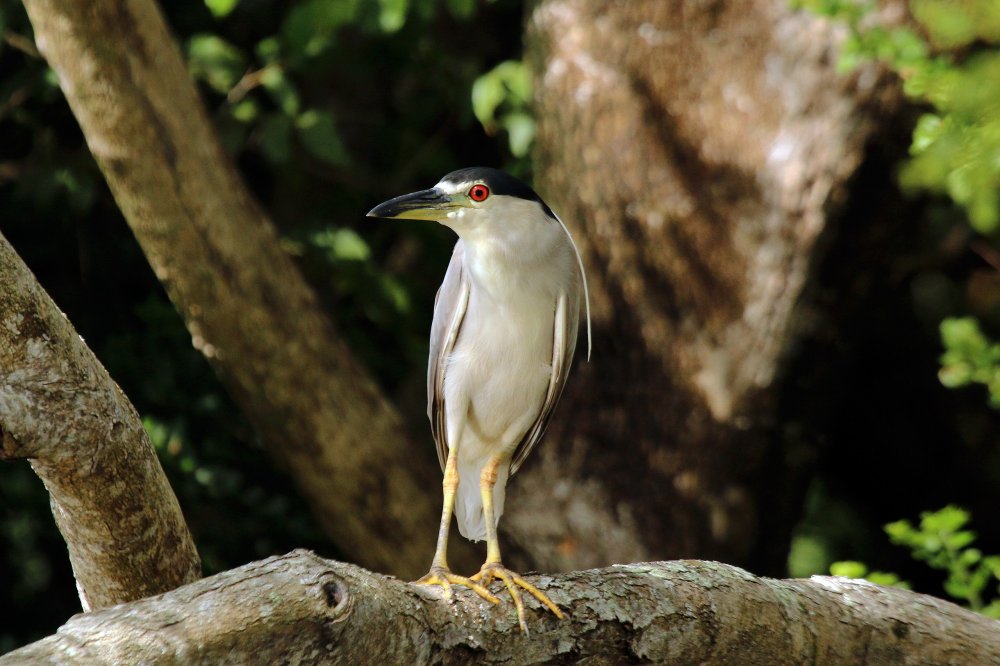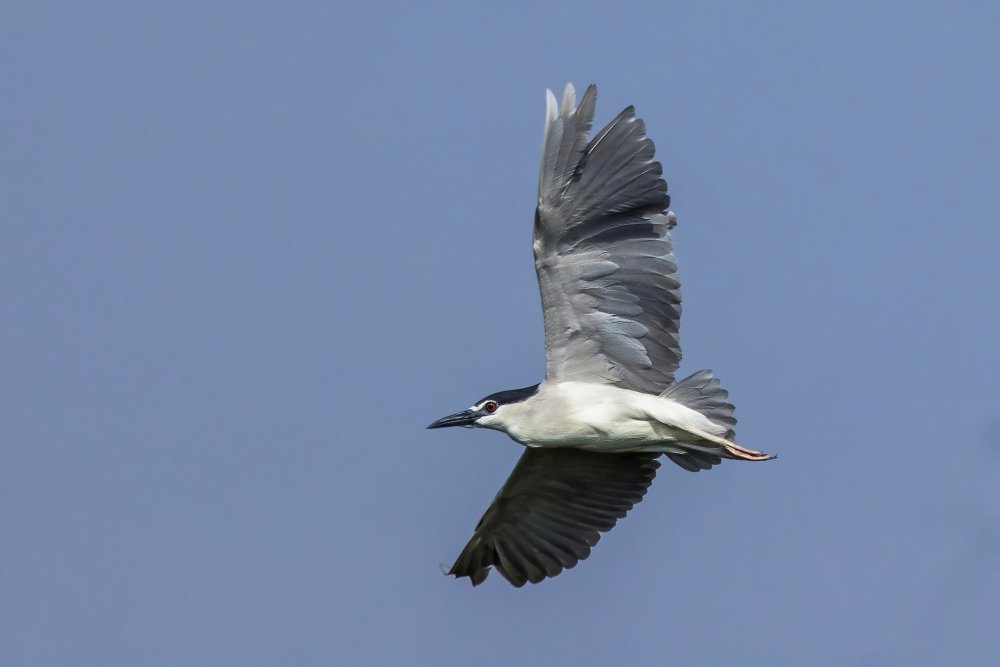Egrets & Herons
These are all long-legged, long-necked wading birds typically seen near the water’s edge. They will tolerate your approach to a point, and then fly away – one of the advantages of being a bird.
Snowy Egret

The Snowy Egret is very easy to spot, because it makes no attempt at camouflage, and stands out in any environment. They make up for this by being rather wary, although I have seen individuals beg for food from fishermen, a learned behavior that is not common. The Snowy Egret is very common; it would be difficult to go out kayaking and not spot at least one.

Adult Snowy Egrets are entirely white apart from the yellow face between the long black bill and the eye, black legs, and bright yellow feet. The nape and neck bear long, shaggy plumes known as aigrettes. Immature snowy egrets have duller, greenish legs.
Measurements:
- Length: 22″ – 26″
- Wingspan: 39″
- Weight: 13.1 oz
Snowy Egrets eat fish, crustaceans, insects, small reptiles, snails, frogs, worms, and crayfish. They stalk prey in shallow water, often running or shuffling their feet, flushing prey into view by swaying their heads, flicking their wings, or vibrating their bills. They may also hover, or “dip-fish” by flying with their feet just above the water surface. Snowy egrets may also stand still and wait to ambush prey, or hunt for insects stirred up by domestic animals in open fields. They sometimes forage in mixed-species groups.
Great Blue Heron

The Great Blue Heron is also surprisingly common and often seen. This bird is similar to the Snowy Egret in most respects, but noticeably bigger and more colorful. Like the egret, this bird will tolerate your approach to a point, and then leave. This bird can often be found in quite small bodies of water – creeks, and even backyard fish ponds, where it can wreak havoc.
The Great Blue Heron is the largest heron native to North America. It exhibits a minor degree of sexual dimorphism; with males slightly larger than females, but otherwise, the sexes are not easily outwardly distinguishable. It has head-to-tail length of 36″ – 54″, a wingspan of 66″ – 79″, a height of 45″ – 54″, and a weight of 4-8 lb).
Notable features of Great Blue Herons include slaty (gray with a slight azure blue) flight feathers, red-brown thighs, and a paired red-brown and black stripe up the flanks; the neck is rusty-gray, with black and white streaking down the front; the head is paler, with a nearly white face, and a pair of black or slate plumes runs from just above the eye to the back of the head. The feathers on the lower neck are long and plume-like; it also has plumes on the lower back at the start of the breeding season. The bill is dull yellowish, becoming orange briefly at the start of the breeding season, and the lower legs are gray, also becoming orangey at the start of the breeding season. Immature birds are duller in color, with a dull blackish-gray crown, and the flank pattern is only weakly defined; they have no plumes, and the bill is dull gray-yellow.

The great blue heron can adapt to almost any wetland habitat in its range. It may be found in numbers in fresh and saltwater marshes, mangrove swamps, flooded meadows, lake edges, or shorelines. It is quite adaptable and may be seen in heavily developed areas as long as they hold bodies of fish-bearing water.
Great blue herons rarely venture far from bodies of water, but are occasionally seen flying over upland areas. They usually nest in trees or bushes near water’s edge, often on islands (which minimizes the potential for predation) or partially isolated spots.
Night Heron

The Black-Crowned Night Heron or just Night Heron is a medium-sized bird found throughout a large part of the world, including parts of Europe, Asia, and North and South America. This is the third common wading bird in the region. True to its name, it is more commonly seen at dusk and after dark, although they are not strictly nocturnal and may be seen in the daytime as well.
Adults have a black crown and back with the remainder of the body white or grey, red eyes, and short yellow legs. They have pale grey wings and white underparts. Two or three long white plumes, erected in greeting and courtship displays, extend from the back of the head. The sexes are similar in appearance although the males are slightly larger.

Black-crowned night herons do not fit the typical body form of the heron family. They are relatively stocky with shorter bills, legs, and necks than their more familiar cousins, the egrets and “day” herons. Their resting posture is normally somewhat hunched but when hunting they extend their necks and look more like other wading birds.
Measurements:
- Length: 23″ – 26″
- Wingspan: 45″ – 46.5″
- Weight: 25.6-35.8 oz

